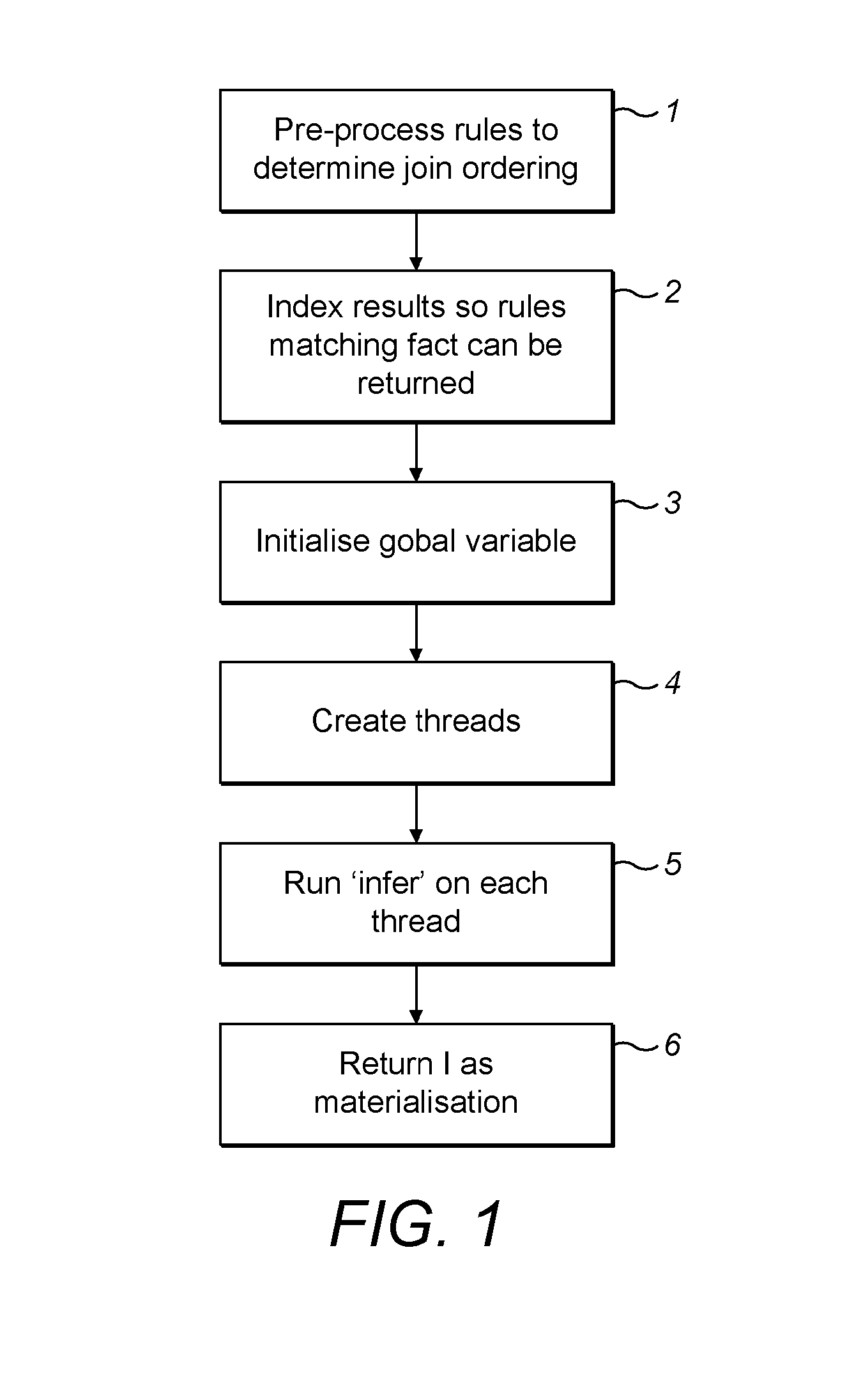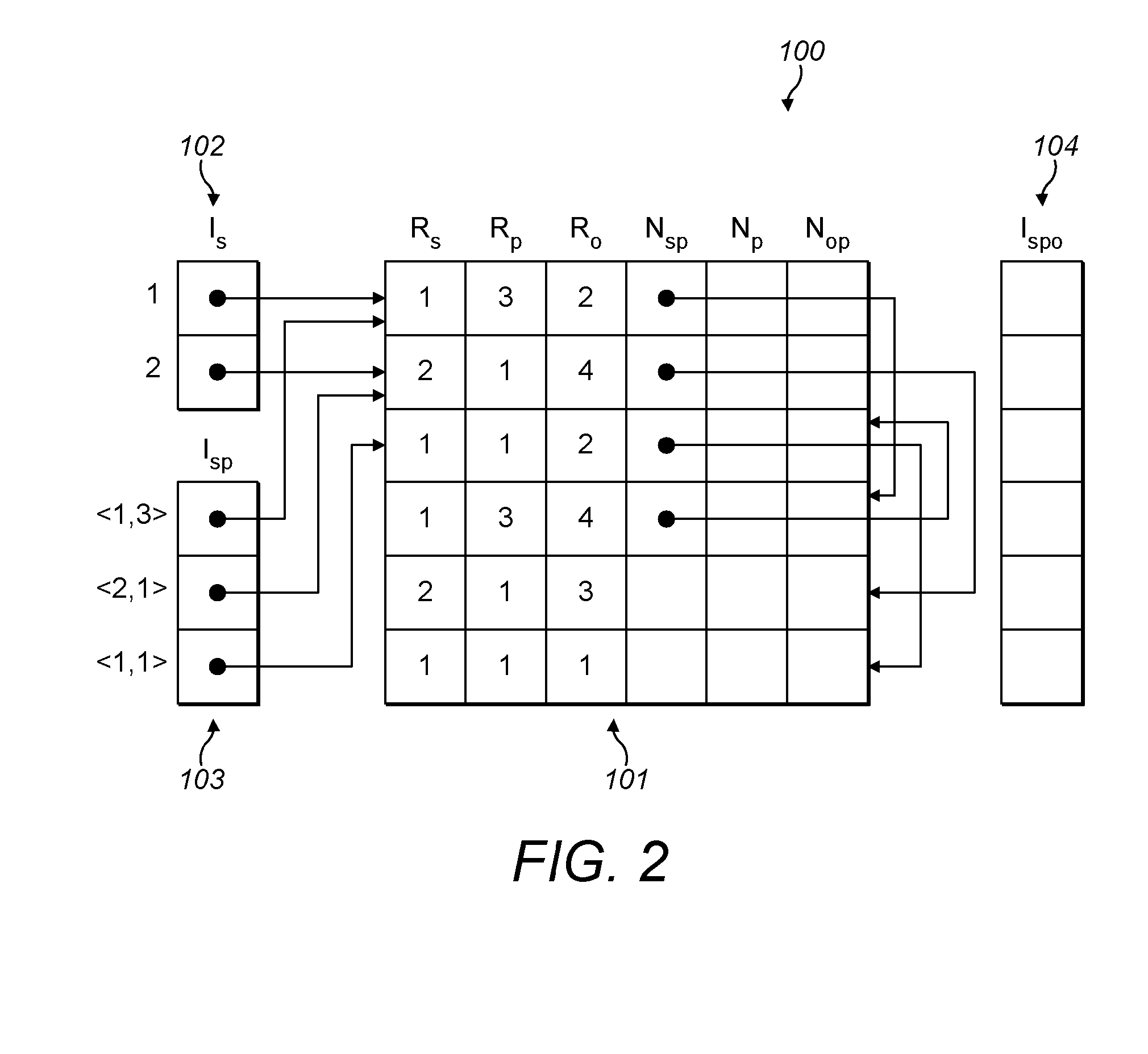Parallel materialisation of a set of logical rules on a logical database
a technology of logical database and materialisation, applied in the field of parallel materialisation of a set of logical rules on a logical database, can solve the problems of inability to efficiently perform parallel processing, and inability to support parallel processing memory use by such methods
- Summary
- Abstract
- Description
- Claims
- Application Information
AI Technical Summary
Benefits of technology
Problems solved by technology
Method used
Image
Examples
Embodiment Construction
[0072]There is now described a method of materialisation of a set of logical rules on a logical database in accordance with an embodiment of the invention. Following the logical perspective on databases described in S. Abiteboul, R. Hull, V. Vianu, Foundations of Databases, Addison Wesley, 1995, it is assumed that the database has countably many relation names, constants and variables. The following terminology is used. A “term” is a constant or variable. An “atom” is a relation applied to a set of terms, i.e. R(t1, . . . tn). If the terms of an atom are all constants, it is a “fact”. A “database instance” I is a set of facts. A (datalog) “rule” is of the form:[0073]B1 and . . . and Bn->H
where B1 to Bn are “body” atoms, and H is the “head” atom. Such a rule must be “safe”, which means that every variable that occurs in the head atom H occurs in at least one body atom Bi. A (datalog) program P is a set of rules. A “substitution”σ is a partial mapping of variables to terms, and for an...
PUM
 Login to View More
Login to View More Abstract
Description
Claims
Application Information
 Login to View More
Login to View More - R&D
- Intellectual Property
- Life Sciences
- Materials
- Tech Scout
- Unparalleled Data Quality
- Higher Quality Content
- 60% Fewer Hallucinations
Browse by: Latest US Patents, China's latest patents, Technical Efficacy Thesaurus, Application Domain, Technology Topic, Popular Technical Reports.
© 2025 PatSnap. All rights reserved.Legal|Privacy policy|Modern Slavery Act Transparency Statement|Sitemap|About US| Contact US: help@patsnap.com



